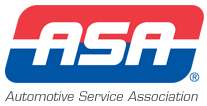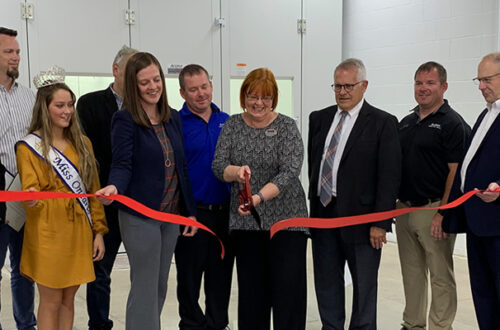ASA Webinar Wednesday: Would You Take a Job for $200 an Hour?

On Jan. 15, ASA’s January 2020 installment of its Webinar Wednesday series featured Becky Witt, AMAM, George Witt Service in Lincoln, NE, and former AMI president and instructor, who presented “Would You Take a Job for $200 an Hour?”
Based on a university-level cost accounting class, the webinar was applied to an automotive shop to provide better understanding of how pricing should be determined as well as tools to increase profits. Witt explored how the way people look at things impacts behavior, how shops leave money on the table because they don’t recognize the value in the transaction, and the use of cost accounting principles that can open new methods to increase profits.
The webinar began with Tony Molla, ASA’s vice president of industry relations, welcoming attendees and introducing Witt. Witt began by clarifying that the seminar is a micro class, not a macro view, and should be treated as a buffet – some things may not apply to each attendee, while others may be extremely helpful. She added, “If you don’t learn anything, then you get validation that you’re great at business.”
After stressing that he would not recommend any price or discuss pricing with the intent to set prices, she defined gross profit as “the amount left over from the sale after costs have been “deducted” and mark-up as “a calculation made on the cost of the part to arrive at a selling price.” Net profit is “what’s left over after you deduct operating expenses from your gross profit.” Witt stressed, “You should all know how much it costs you to put that key in the door each morning.”
Witt discussed how to find hours per repair order (total bill hours divided by number of repair orders) and net effective labor rate (total labor sales divided by total billed hours). She then explained how to calculate gross profit per billed hour, which she called “the most important number you’re going to use the rest of your life,” dividing total gross profit by total billed hours.
Looking at tech sales per minute (total sales per billed hour divided by 60 minutes in an hour) “helps everyone understand the value of every minute and the urgency in efficiency.” Regarding hours per repair order, Witt urged “Forget the standard. It depends on the shop’s operation. The significance is in potential and stability.”
The net effective labor rate is what the average billed hour really sells for and is lower than the “standard” labor rate due to competitive pricing. “This number should be used for all financial planning – know this number,” Witt urged.
Witt continued, “Mark-ups are a very confusing term. It’s not a number. It’s a mathematical operation. For example, if your desired gross profit is 42% and you buy it for $10. In order to sell it for 42% gross profit, you divide ten by .58 which gives you $17.24. What you’re going to do is take what you want and subtract it from 100 and divide it. Don’t multiply cost to get the selling price.”
Demonstrating the difference between standard and matrix mark-up pricing, Witt used a labor gross profit of 67% with a 42% parts gross profit in the standard mark-up which yield a total gross profit of 60% on the job. Matrix mark-up pricing allowed a parts gross profit of 63.4% and a total gross profit of 66% on the job because “very low-priced goods can easily be marked up substantially more than higher-priced goods,” Witt explained. “This can have a significant impact on your profits at the end of the month, end of the year – 6% at the end of the year is a ton of money.”
The standard formula employs one factor to mark up parts, along with a standard hourly labor rate. “This leaves the shop short of funds that are easily obtained using the matrix method,” she said, encouraging attendees to check their shop management system for matrix pricing adjustments. “Every single business should be using matrix pricing.”
To ascertain the gross profit per hour, add up all expenses, reasonable profit and return on investment (ROI). Divide that number by hours billed per month for a personalized gross profit per hour (gph) requirement.
Witt explored several examples using matrix mark-up pricing to demonstrate how a low gross profit can still product a substantial gph. “Using the ‘standard method’ of pricing, you’d have marked it up too much and lost the job or sublet it or turned it away entirely. Forget the percentages – focus on gross profit per billed hour.”
“Any time you do a job and the money just isn’t there, don’t blame the customer; YOU offered to do it for that,” Witt continued. “So, figure out how long it will take to really do it right and price it at the proper gph.”
Explaining that shopping all over for the lowest prices on every part for each job causes a loss in gph, Witt suggested looking up the list in ALLDATA and selling it for the price indicated there.
Cost accounting, the science of breaking down the steps in a process to see how much each step costs, can be used to gain efficiency and reduce costs. “We eliminate steps that add cost but not value,” Witt explained, moving on to talk about the costs of inventory.
Turning to the topic of discount promotions, Witt asked, “Is it wise to give away money? There are definitely people that are motivated by a discount. Now, I’m not saying to run a silly discount; I’m talking about running an actual promotion.”
An example where a shop offers a 10% discount on a select repair indicated $5,500 in additional gross profit, but Witt pointed out, “All of those sales are net profit because they are sales that would not have been made if he hadn’t run the promotion. That’s a 45% net profit, a 41.6% increase, and it demonstrates the value of doing just one more job each day.”
“The aim of cost accounting is, first, find operational steps that add cost but not value, such as techs waiting for parts, and work on shop efficiency and labor billing,” Witt said. “Second, find out which operations make money, and which don’t. Focus on the money-makers and adjust your pricing or marketing on that tones that don’t. You’re the one that determine what it sells for.”
Witt also warned about the “log jam.” When service writers are overloaded, it prevents them from effectively selling or keeping up. As a result, additional unsold work quits being found. “Too many shop owners see low sales and want to add a tech,” she said, “but the answer may be that you need more office staff. You may need one support person per tech. If your shop’s techs are producing less than 160 billed hours per month, you need more office staff, not more techs.”
Encouraging attendees to make changes to benefit their businesses, Witt concluded, “Analyze your own data, remember accountants only count beans, and do something! It’s very interesting. Accountants don’t make management decisions – accountants only provide information which management uses to make decisions. Do something! Make just two small changes that will do the most good, then make two more changes.”
The webinar ended with a question-and-answer session. ASA’s next Webinar Wednesday will be held on Feb. 19 and will feature “TPMS Tech Solutions” with Gary Hicks, TPMS product marketing manager at Standard Motor Products. For more information, visit asashop.org/webinars.


